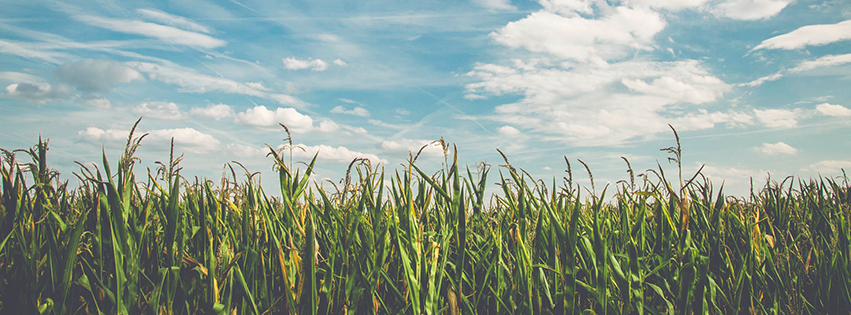
There was a brief window of opportunity for Peoria-area farmers to get a jumpstart on the 2020 planting season. I would estimate around 30 percent of corn and 15 percent of soybean seeds were planted during the stretch of four days between April 20 and 24. This was an improvement from last year’s start—a month later, in mid-May, with most of the corn and soybean crops planted the first ten days of June. The COVID-19 pandemic has not caused any major disruptions in getting the seed in the soil.
Slow Seed Germination
One challenge after those four days of heavy planting, however, was the cool, wet weather which followed for the next few weeks. Ideally, farmers would like to see those seeds emerge from the soil four to six days after planting. But with daytime temperature highs in the 60s and nighttime lows dipping into the 30s, it makes for a slow germination process.
The longer the seed stays beneath the surface, the more likely there will be uneven emergence and a poor stand count (viable growing plants)—both of which contribute to lower yields in the fall. Soybeans are a little more forgiving than corn, however. With a poor stand count, soybeans have the ability to branch out and cover the entire field so the plants can take in as much sunlight as possible. Think of it like this: Corn plants are like folded-up umbrellas, while soybeans are umbrellas that will open up if sunlight is available. Hence, soybeans can make up for a less-than-desired stand count to optimize yield.
The State of Meat & Dairy
Livestock farmers are faced with more difficult circumstances since the coronavirus outbreak. The bottleneck has been in getting the animals processed. There are three major pork processing plants in Illinois—in Monmouth, Beardstown and Rantoul—and two major beef processing plants located in Joslin and Aurora. All have been impacted by the virus, as multiple employees have been infected. While research indicates the virus does not have an impact on the meat itself, just one major plant shutdown can impact five percent of the processing market for a given animal.
There are several smaller meat processing plants in the area—including plants in Elmwood, Farmington and Eureka—and they have been inundated with business. At the beginning of May, these plants were booked well into the fall, and even into early 2021. The new Raber Packing plant on Farmington Road will hopefully be open for processing this fall, at least partially. Their old facility, you may recall, was destroyed by fire in November 2018.
Dairy farmers have also felt the impact with schools closing. Prairie Farms, which has a milk processing plant in Peoria, is a major supplier of milk to schools. You can imagine the market loss if kids are not drinking milk while doing schoolwork at home.
Hands-On Opportunities
There continue to be options to purchase locally-grown food from farmers amidst the pandemic. Fresh fruits and vegetables are still being grown by specialty crop growers, and some farmers are selling animals or meat directly from the farm.
Perhaps these times present an opportunity for many people, who are now generations removed from the farm, to get their hands back in the soil by growing a garden or raising a few animals. Statistically, fewer than two percent of our population are classified as farmers. You could be a “farmer” too, whether it’s just a potted tomato plant growing on your deck or a few chickens in your backyard (if city ordinances allow it). Give it a try! You will find it rewarding to care for and harvest your own food. PM
- Log in to post comments

